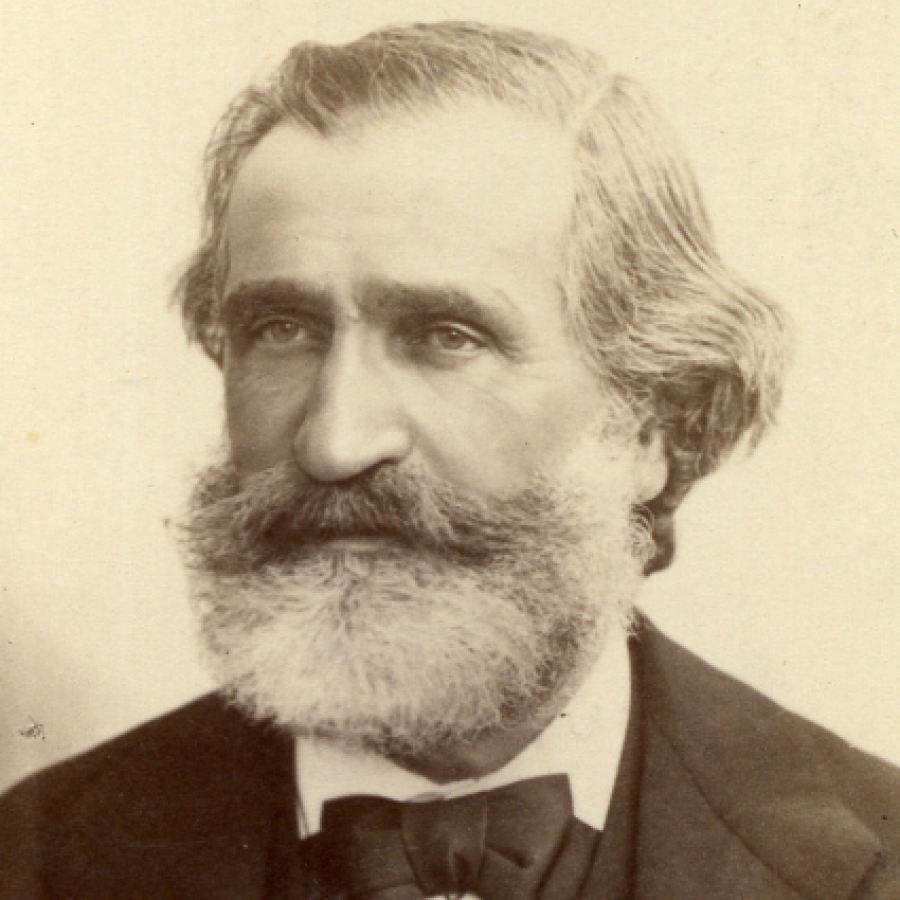In 1873, after “Aida”, Verdi started working on his “Requiem”. In the decade 1860-1870, he suffered several heavy personal losses – there died: his father-in-law Antonio /Papa/ Barezzi, his close friend and collaborator, the poet and the librettist of: “Rigoletto”, “La traviata”, “Un ballo in maschera”, “Ernani”, “Macbeth”, “Stiffelio”, “I due Foscari”, “Simon Boccanegra” and “La forza del destino”. After that also Rossini /1868/. In 1873, on 22 May, died also the great writer Alessandro Manzoni, to whom Verdi felt great respect.
Both geniuses and inspirers of the Italian revolution met in the summer of 1868. Here it is what he wrote in one of his letters to his friend countess Clarice Mattei: “What could I tell you about Alessandro Manzoni? How could I express my incredible admiration and blessed feeling before this saint, as you call him? I was ready to fall on my knees in front of him! /7 July 1868/. For the composer the writer was the highest example of patriotic proud of the having suffered too much and in pieces Italy, at that time fighting for its national independence and unification.
On the photo: Verdi’s study in villa Santa Agatha, where Verdi created his great “Requiem” in 1874.

Manzoni’s death incited Verdi to create one of his most beautiful works – “Messa da Reqiem”. The premiere was on 22 May 1874, at the occasion of the Anniversary of the writer’s death in the San Marco Cathedral in Milan. Conductor was the author, and the soloists were among the first singers of the epoch: the famous soprano Teresa Stolz, the mezzo-soprano Maria Waldmann, the tenor Capponi and the bass Maini. There took part a big chorus and a very big orchestra. Then followed three repetitions in the hall of La Scala, and only after a week was the premiere at Grande Opéra, Paris /there Verdi was awarded the Order of the Legion of Honour of France/, after that also in London, Berlin, Vienna, Madrid. Everywhere with a triumphal success, in order to enter in the permanent repertoire of all big choruses and orchestras in the world. Verdi’s Requiem set also one new beginning – the big sacral works to be performed not only in the churches, but also in the opera and concert halls.
In spite of the success and the immense interest of the audience, in the church circles appeared critiques and attacks against the “mundane” character of the music. The clerics decided that Verdi treated “the liturgical text too freely and irresponsibly”. The Requiem indeed doesn’t seem like the typical traditional catholic requiem messes. “In this music, wrote Giuseppe Roncaglia, always present is the human being with its fears, doubts, supplications, tears, ecstasies, with its soul upswings and desperations. Verdi reveals before our imagination a series of sound pictures, so different in form, lines and colouring, that involuntarily one remembers the mighty and dramatic brush of the painter Tintoretto, the strongest pages from “The Divine Comedy” by Dante, the „Last Judgement” by Michelangelo Buonarroti...”
In this late masterpiece of his, Verdi speaks in his usual language, inspired by one undoubtedly deep feeling. A vibrating lyricism. The wide, plastic models here are utmost expressive, hot, sensual like his opera melodies. His musical language is figuratively concrete, like in his most powerful opera opuses. The typical for his operas contrasting between the different images and moods and the bright contrast of the Requiem are related to his quests in “Aida”, “Don Carlo” and his other mature stage works. In its seven parts we meet a unique freshness and a diversity of timbre and harmonic tints, often harsh, dense, dim /”Dies irae”, “Tuba mirum”, “Rex remendae majestatis”/, or light, bright /”Sanctus”/, sometimes impressionistically exquisite and tender like in “Lux aeterna” and in “Lacrimosa”. Like in “Aida” Verdi’s orchestra is “vocal”, “singing”, using the timbres of the solo wind instruments very skilfully, masterfully, in an innovative way.
A music of genius, in which overflows an ocean of feelings: brave heroism, angry protest, deep suffering, enlightened lyricism and passionate dream and hope for freedom and happiness. The spirit is brought down, but not broken, it is still alive – this is the conceptual conclusion of this gigantic, innovative work of the great Verdi.
Ognyan STAMBOLIEV
